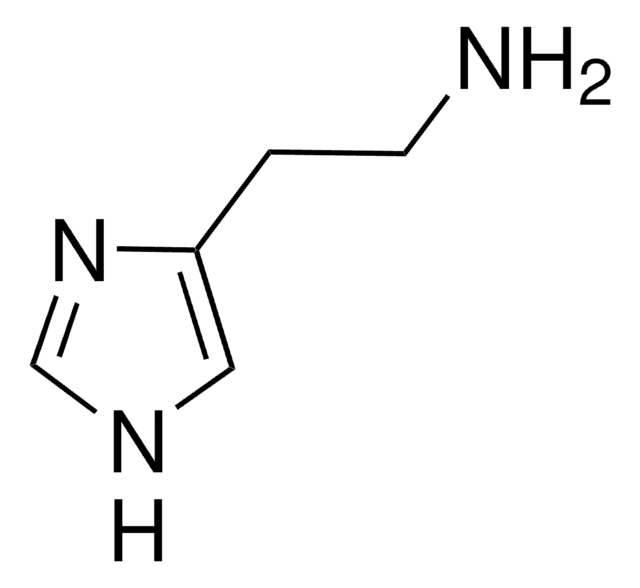51799
Putrescine
analytical standard
Synonym(s):
1,4-Diaminobutane, 1,4-Butanediamine, Putrescine, Tetramethylenediamine
About This Item
Recommended Products
grade
analytical standard
Quality Level
Assay
≥98.5% (GC)
shelf life
limited shelf life, expiry date on the label
expl. lim.
9.08 %
technique(s)
HPLC: suitable
gas chromatography (GC): suitable
refractive index
n20/D 1.457 (lit.)
bp
158-160 °C (lit.)
mp
25-28 °C (lit.)
density
0.877 g/mL at 25 °C (lit.)
application(s)
cleaning products
cosmetics
flavors and fragrances
food and beverages
personal care
format
neat
storage temp.
2-8°C
SMILES string
NCCCCN
InChI
1S/C4H12N2/c5-3-1-2-4-6/h1-6H2
InChI key
KIDHWZJUCRJVML-UHFFFAOYSA-N
Looking for similar products? Visit Product Comparison Guide
Application
- Putrescine in food analysis: A study demonstrated a novel method for the selective extraction of dietary polyamines, including putrescine, from chicken breast, utilizing lab-on-a-chip electromembrane and dispersive liquid-liquid microextraction techniques for enhanced food analysis (Barzegar et al., 2024).
- Putrescine in biochemical analysis: The application of Electrostatic Repulsion Hydrophilic Interaction Liquid Chromatography (ERLIC) for the quantitative analysis of polyamines such as putrescine showcases its importance in biochemical assays, providing precise measurement tools for research and development (Dörfel et al., 2024).
Other Notes
Recommended products
Signal Word
Danger
Hazard Statements
Precautionary Statements
Hazard Classifications
Acute Tox. 2 Inhalation - Acute Tox. 3 Dermal - Acute Tox. 4 Oral - Eye Dam. 1 - Met. Corr. 1 - Skin Corr. 1B
Storage Class Code
6.1B - Non-combustible acute toxic Cat. 1 and 2 / very toxic hazardous materials
WGK
WGK 1
Flash Point(F)
113.0 °F - closed cup
Flash Point(C)
45 °C - closed cup
Choose from one of the most recent versions:
Already Own This Product?
Find documentation for the products that you have recently purchased in the Document Library.
Customers Also Viewed
Protocols
HPLC Analysis of Biogenic Amines on Ascentis® RP-Amide
Our team of scientists has experience in all areas of research including Life Science, Material Science, Chemical Synthesis, Chromatography, Analytical and many others.
Contact Technical Service







